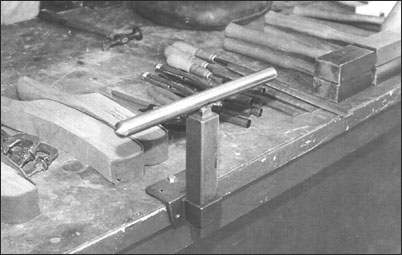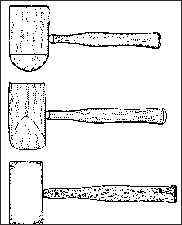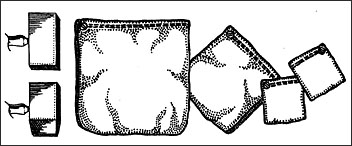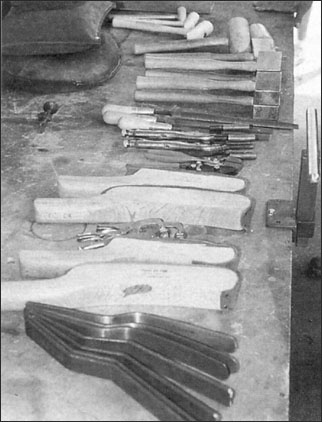The Fine Art of Metal Shaping Part 2
|
Serious sheet-metal forming work requires use of an assortment of special tools. Top left- Hickory mallet has
flat and domed ends. One at center has one end formed to wedge shape and is used in the ``shrinking"
operation. One at lower left has a plastic head also useful for shrinking.
|
At their establishment, Kent does assorted things. He has written and published numerous articles and booklets and has produced several instructional videos on sheet metal forming. We were fortunate to be able to view one of them, "An American's View of the English Wheel." It runs two hours and gives a very good grasp of what metal shaping is all about. At Nevada City, he offers intensive one-day metal forming courses for groups of not more than ten persons at a time.
White has also developed and sells a range of sheet metal hand tools and shop machines . Some of them are special purpose items not sold in hardware and tool stores, and thus are unknown to most mechanics. He has trained Delta Air Lines mechanics in special aspects of sheet aluminum work. He is a consultant to various parties in sheet metal forming. He gives demonstrations and lectures at such aviation conventions as FAA AirVenture at Oshkosh, the Sun a Fun FAA fly-in at Lakeland, Florida, the Northwest FAA Fly-In at Arlington, Washington and the Golden West FAA Fly-In at Atwater, California.
Kent White has an effective way of talking to onlookers in the course of his demonstrations. Anyone wanting to learn more about the practical aspects of sheet metal forming would do well to check with TM Technologies about his schedule for the year and plan to spend some hours watching and listening to him.
|
Below- Another view of these
files and hammers
. The long, shiny round bar is a cylindrical ``stake" twelve inches long, useful as an anvil over which to
make bends of small radius.

|






